Major fossil cache in L.A.
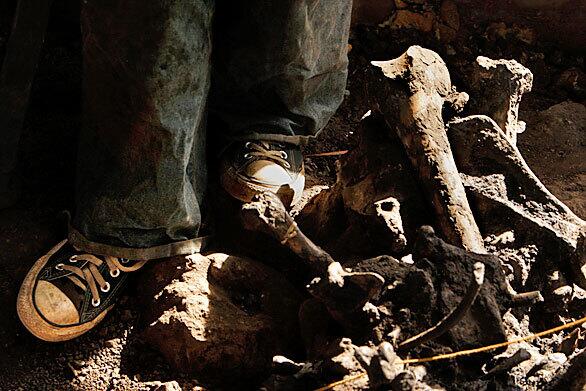
The largest known deposit of fossils from the last ice age has been found in Los Angeles. Andrea Thomer, an excavator for George C. Page Museum at the La Brea Tar Pits, stands next to the prehistoric bones of an American lion, a coyote and a young horse. These and other species yet to be identified were unearthed from beneath a former May Co. parking lot on the Miracle Mile. (Genaro Molina / Los Angeles Times)
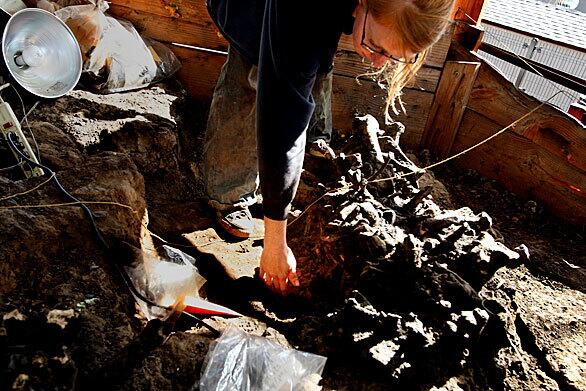
Excavator Thomer and other Page Museum researchers are just beginning the work of extracting fossils from the soil, huge chunks of which were removed intact and placed in large wooden crates for later excavation. The only exceptions to the crating process were a nearly intact mammoth and a horse skull. (Genaro Molina / Los Angeles Times)
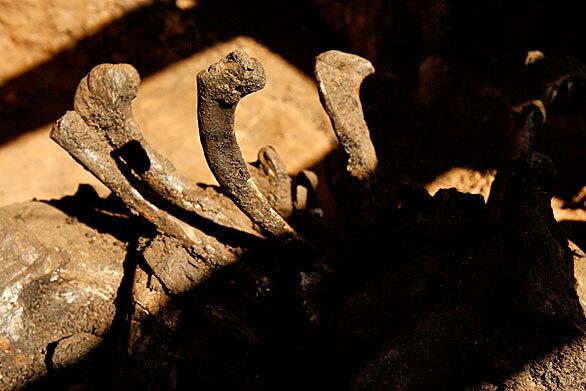
The ribs of a prehistoric horse rise out of the dirt after being unearthed in “Box 1” of the 23 crates filled with architectural treasures at Page Museum. (Genaro Molina / Los Angeles Times)
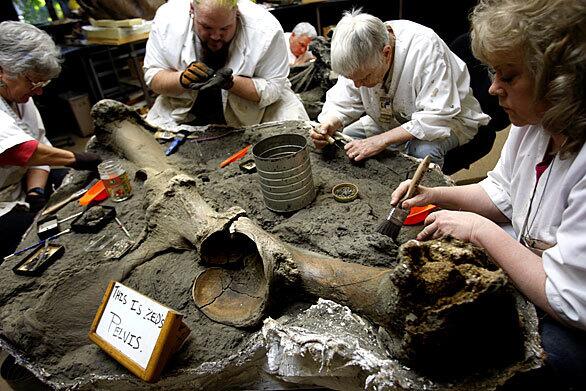
Volunteer Judy Scharf, left, assistant lab supervisor Trevor Valle and volunteers Pat Simun and Linda Wright carefully brush away the dirt surrounding the pelvis of a mammoth, which members of the Page Museum have named Zed. (Genaro Molina / Los Angeles Times)
Advertisement
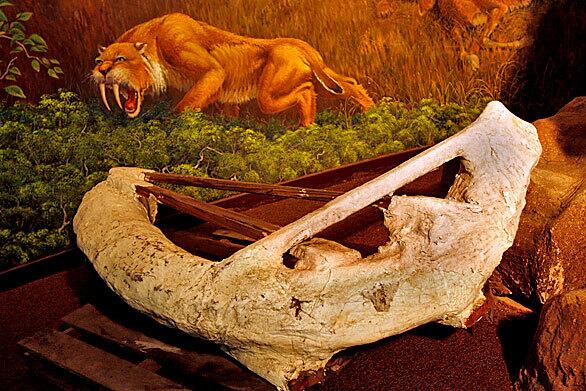
A mammoth tusk (Zed’s) from the excavation, “Project 23: New Discoveries at Rancho La Brea,” is covered in plaster of Paris and burlap for protection at the L.A. museum. (Genaro Molina / Los Angeles Times)
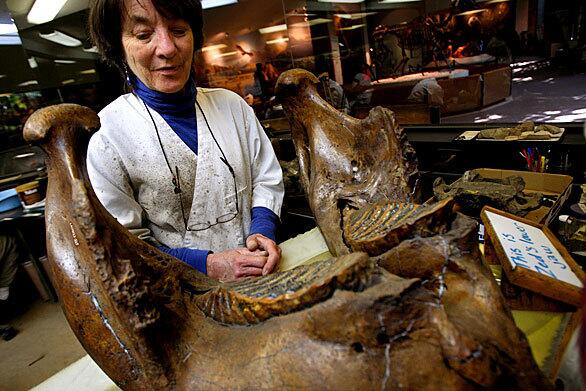
Page lab supervisor Shelley M. Cox looks over the lower jawbone of the mammoth. (Genaro Molina / Los Angeles Times)
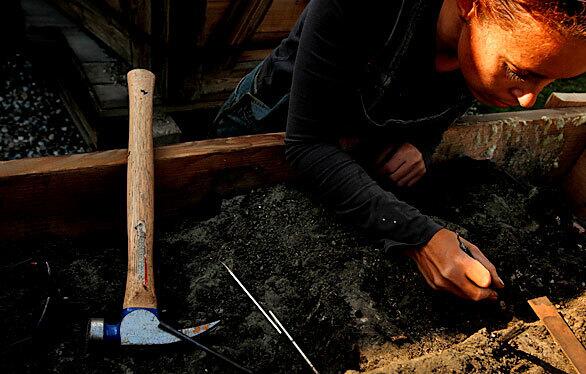
Senior excavator Kristen Brown is on a fossil hunt in a crate of dirt outside the Page Museum. (Genaro Molina / Los Angeles Times)
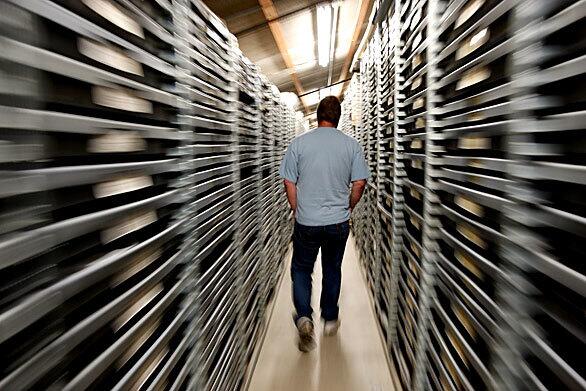
Collections manager Christopher A. Shaw walks through a room where thousands upon thousands of fossils found at Rancho La Brea are stored at the Page Museum. (Genaro Molina / Los Angeles Times)



